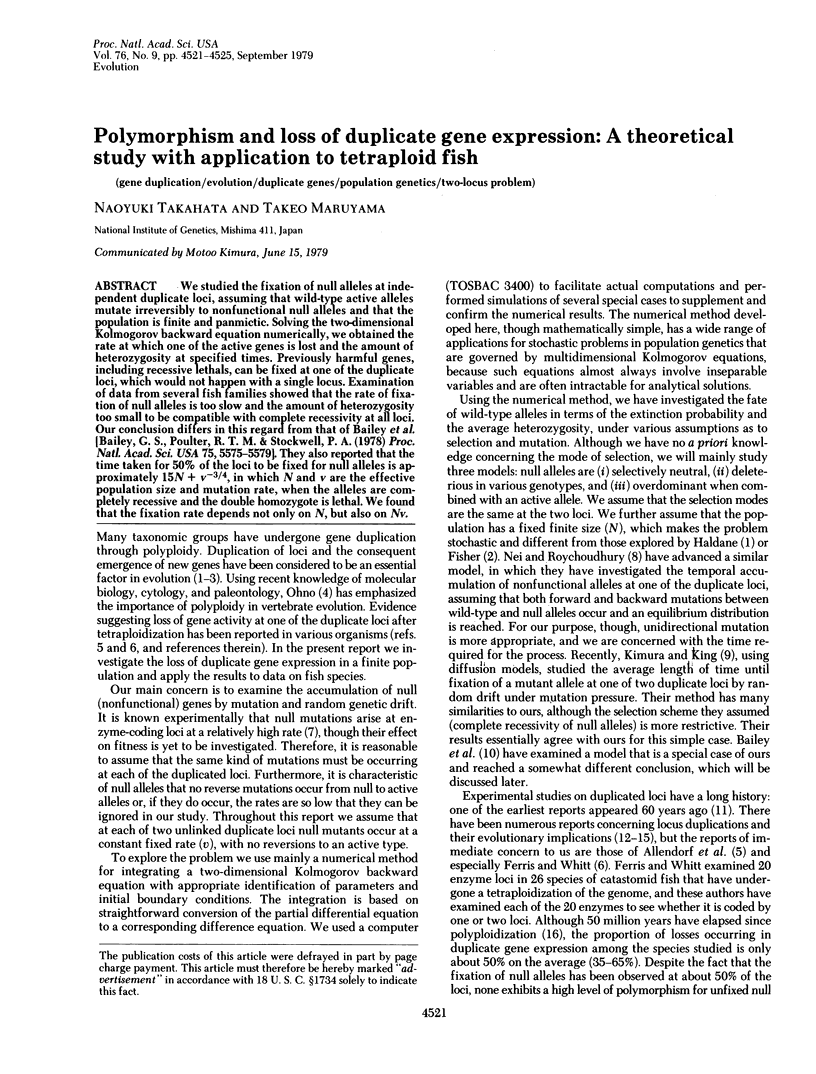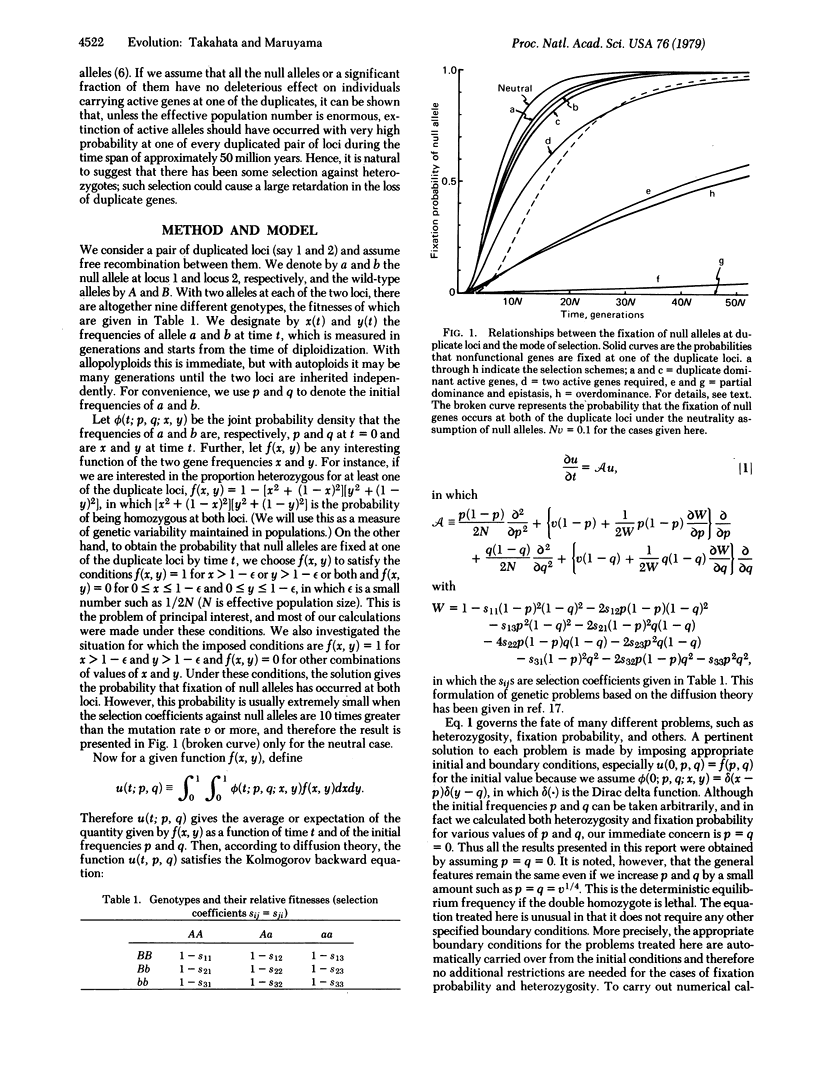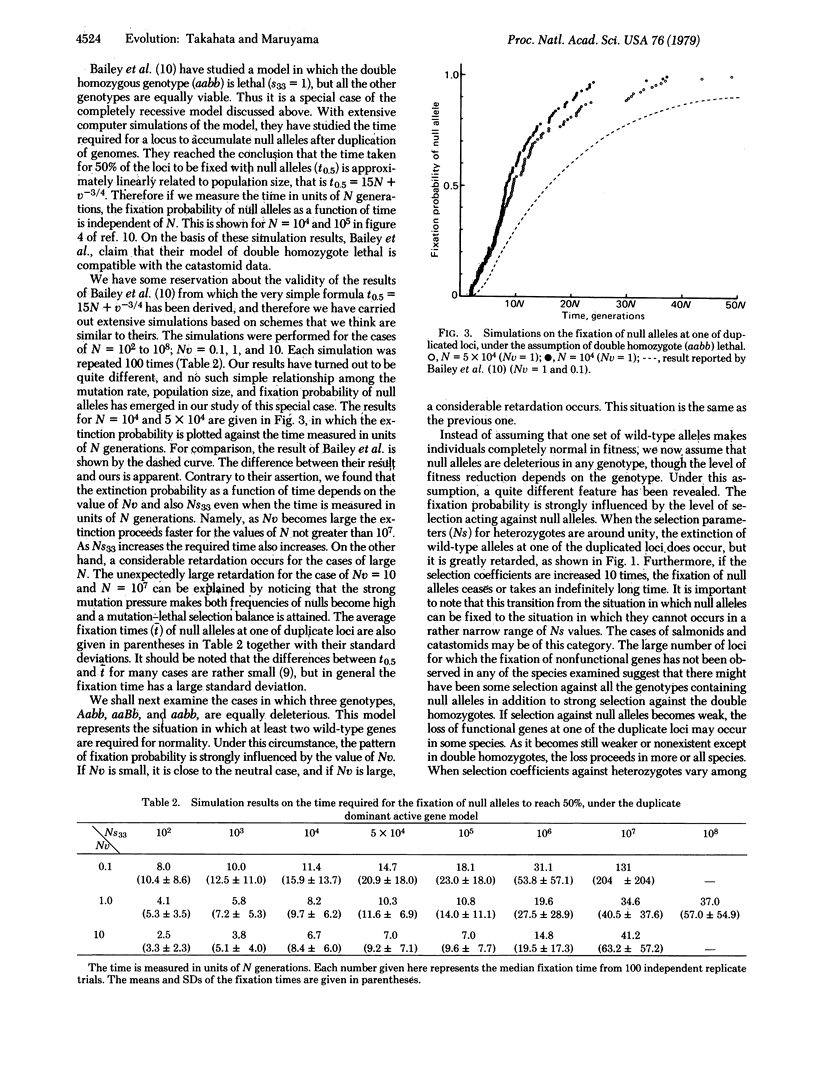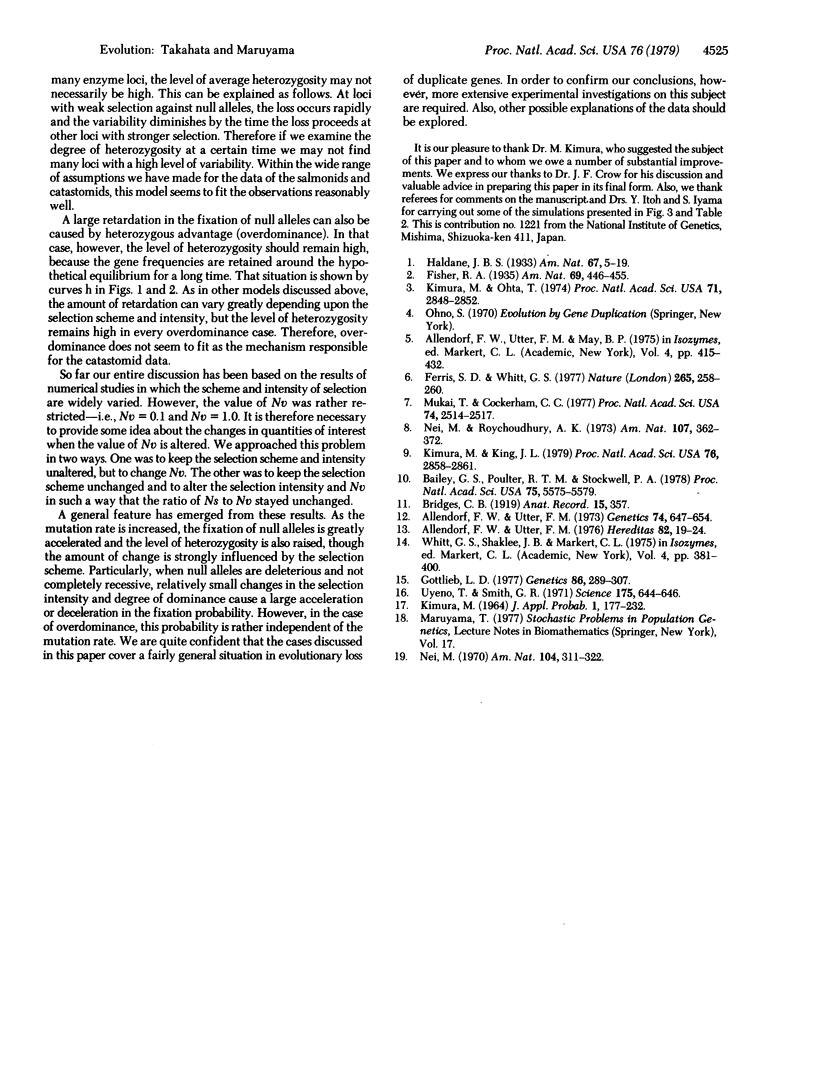Abstract
We studied the fixation of null alleles at independent duplicate loci, assuming that wild-type active alleles mutate irreversibly to nonfunctional null alleles and that the population is finite and panmictic. Solving the two-dimensional Kolmogorov backward equation numerically, we obtained the rate at which one of the active genes is lost and the amount of heterozygosity at specified times. Previously harmful genes, including recessive lethals, can be fixed at one of the duplicate loci, which would not happen with a single locus. Examination of data from several fish families showed that the rate of fixation of null alleles is too slow and the amount of heterozygosity too small to be compatible with complete recessivity at all loci. Our conclusion differs in this regard from that of Bailey et al. [Bailey, G.S., Poulter, R. T. M. & Stockwell, P. A. (1978) Proc. Natl. Acad. Sci. USA 75, 5575--5579]. They also reported that the time taken for 50% of the loci to be fixed for null alleles is approximately 15N + v-3/4, in which N and v are the effective population sizgote is lethal. We found that the fixation rate depends not only on N, but also on Nv.
Full text
PDF




Selected References
These references are in PubMed. This may not be the complete list of references from this article.
- Allendorf F. W., Utter F. M. Gene Duplication within the Family Salmonidae: Disomic Inheritance of Two Loci Reported to Be Tetrasomic in Rainbow Trout. Genetics. 1973 Aug;74(4):647–654. doi: 10.1093/genetics/74.4.647. [DOI] [PMC free article] [PubMed] [Google Scholar]
- Allendorf F. W., Utter F. M. Gene duplication in the family Salmonidae. III. Linkage between two duplicated loci coding for aspartate aminotransferase in the cutthroat trout (Salmo clarki). Hereditas. 1976;82(1):19–24. doi: 10.1111/j.1601-5223.1976.tb01532.x. [DOI] [PubMed] [Google Scholar]
- Bailey G. S., Poulter R. T., Stockwell P. A. Gene duplication in tetraploid fish: model for gene silencing at unlinked duplicated loci. Proc Natl Acad Sci U S A. 1978 Nov;75(11):5575–5579. doi: 10.1073/pnas.75.11.5575. [DOI] [PMC free article] [PubMed] [Google Scholar]
- Ferris S. D., Whitt G. S. Loss of duplicate gene expression after polyploidisation. Nature. 1977 Jan 20;265(5591):258–260. doi: 10.1038/265258a0. [DOI] [PubMed] [Google Scholar]
- Gottlieb L. D. Evidence for duplication and divergence of the structural gene for phosphoglucoisomerase in diploid species of clarkia. Genetics. 1977 Jun;86(2):289–307. doi: 10.1093/genetics/86.2.289. [DOI] [PMC free article] [PubMed] [Google Scholar]
- Kimura M., King J. L. Fixation of a deleterious allele at one of two "duplicate" loci by mutation pressure and random drift. Proc Natl Acad Sci U S A. 1979 Jun;76(6):2858–2861. doi: 10.1073/pnas.76.6.2858. [DOI] [PMC free article] [PubMed] [Google Scholar]
- Kimura M., Ohta T. On some principles governing molecular evolution. Proc Natl Acad Sci U S A. 1974 Jul;71(7):2848–2852. doi: 10.1073/pnas.71.7.2848. [DOI] [PMC free article] [PubMed] [Google Scholar]
- Mukai T., Cockerham C. C. Spontaneous mutation rates at enzyme loci in Drosophila melanogaster. Proc Natl Acad Sci U S A. 1977 Jun;74(6):2514–2517. doi: 10.1073/pnas.74.6.2514. [DOI] [PMC free article] [PubMed] [Google Scholar]
- Uyeno T., Smith G. R. Tetraploid origin of the karyotype of catostomid fishes. Science. 1972 Feb 11;175(4022):644–646. doi: 10.1126/science.175.4022.644. [DOI] [PubMed] [Google Scholar]


